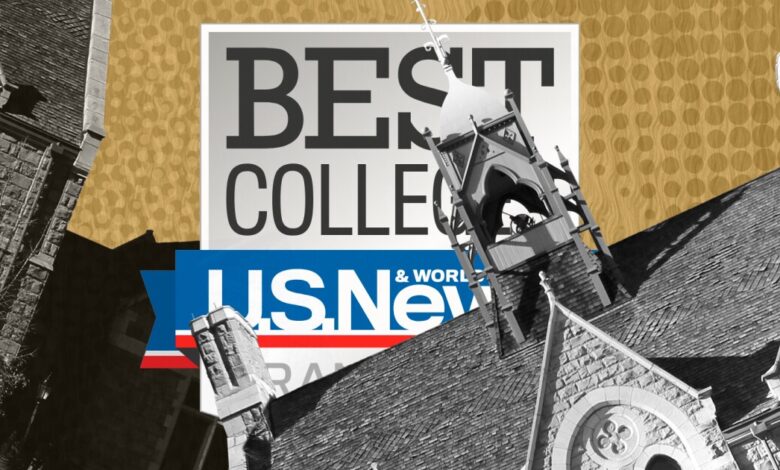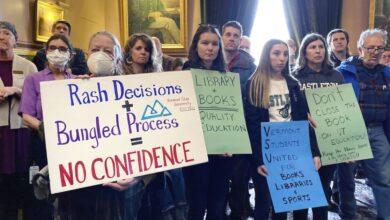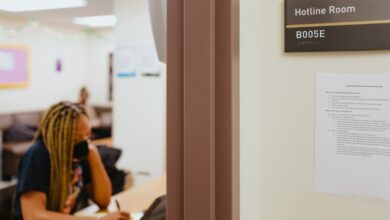Colleges Protesting ‘U.S. News’ Rankings Say They’re Doing It for Low-Income Students. Do They Mean It?

[ad_1]
The U.S. News revolt of 2022-23 has reached the undergraduate lists. Colorado College, ranked among the top 30 liberal-arts colleges, announced on Monday that it would stop cooperating with the magazine. It’s among the first institutions to withdraw from the undergraduate rankings in the current wave of protests.
The college’s decision underscores a paradox in the movement against U.S. News & World Report. Since last fall, the deans of dozens of law and medical schools have said they won’t send information to the magazine, as did the leaders of the Rhode Island School of Design. Often, the “We’re leaving” announcements cite how the U.S. News algorithm hurts students from low-income families. Yet many of these leavers have among the nation’s wealthiest student bodies. Will ditching the ranking help them serve society more equitably? Or is it performative?
Nowhere is that paradox more prominent than Colorado College. In 2017, an analysis published in The New York Times found that nearly a quarter of the college’s students came from families with incomes in the top 1 percent of the country, while just 11 percent came from families in the bottom 60 percent of incomes. Only one other college had a starker difference between the two student populations than Colorado College did. Though the institution was exemplary, it wasn’t an anomaly. Several colleges with law or medical schools that have left U.S. News lists, such as Duke, Georgetown, and Yale Universities, had more undergraduate students from the top 1 percent than from bottom 60 percent.
L. Song Richardson, who became Colorado College’s president in 2021, said she’s looking to change the college. “I want to become a national leader in access, social mobility, and opportunity,” she said. “What that means is wherever it might be that we are now does not define where we will be in the future.”
“If I am saying, and our community is saying, that we will be a leader in access, opportunity, and social mobility, then we could not continue to be a part of the U.S. News & World Report ‘Best Colleges’ ranking,” she added. “It’s just inconsistent.”
For Akil Bello, senior director of advocacy at FairTest and a longtime rankings critic, bowing out of U.S. News is a start toward correcting the overwhelming income imbalances among who attends America’s “top” colleges. “It’s a positive first step,” he said. But it’s not enough alone. He emphasized that real transformation could come only from changing admissions policies so more low- and middle-income and other historically underrepresented students get in.
Richardson pointed to programs Colorado College started after the publication of the 2017 wealth analysis. Stroud Scholars brings local high-school students to campus for three successive summers for free college prep and guidance in applying. Everyone who completes the program is guaranteed admission. The Colorado Pledge promises that, for in-state students from families earning $250,000 annually or less, Colorado College will cost no more than the University of Colorado at Boulder, with increasing levels of support for lower-income families. Richardson said the college intends for the pledge eventually to cover all U.S. students.
Since the fall of 2019, the share of new first-year students to Colorado College who qualify for Pell Grants has ranged from 13 to 18 percent, compared with 9 to 14 percent in the four years before that. Both Bello and Elizabeth D. Pisacreta, who works on college access for Ithaka S+R, a nonprofit consultancy, said such movement in the Pell numbers is a good sign, although the college could do more. A Pell rate of about 17 percent is average for private colleges with high graduation rates like Colorado College, Pisacreta said, and about a third of undergraduates nationwide get Pell Grants. (At the Rhode Island School of Design, whose announcement that it would no longer cooperate with the undergraduate U.S. News ranking came last month, 15 percent of first-time students received Pell Grants in 2020-21, the most recent federally available data.)
Colorado College does not know how many of its students today come from families in the country’s top income tiers, Mark Hatch, vice president for enrollment, wrote in an email. The 2017 1-percenters study, by the economist Raj Chetty and colleagues, relied on anonymized tax-return data that’s not typically available to researchers. Colorado College receives family-income information only from people who apply for financial aid, which is about half of the student body.
Until Chetty’s study appeared in The New York Times, colleges often did not know exactly how wealthy their students were who didn’t apply for financial aid, Hatch wrote.
Programs like Stroud Scholars and the Colorado Pledge can be effective at attracting lower-income students, Pisacreta said. The proof will be in how many students the programs ultimately serve, she added. The Stroud program hasn’t graduated its first class yet, but Hatch wrote that the college increased in-state enrollment by 56 percent in the Colorado Pledge’s first three years, compared with the three preceding years.
Meanwhile, what can protesting U.S. News do? Pisacreta wasn’t so sure it made a difference either way. Even without the U.S. News algorithm incentivizing colleges to admit more privileged students — for their SAT scores or for their likelihood of holding no debt at the end, two factors in the ranking — colleges still rely on a portion of their student body to pay full tuition.
“The financial incentives still exist,” Pisacreta said. “How do wealthy, but resource-constrained, institutions consider the trade-offs of increases in need-based aid versus investments in faculty or facilities when they’re in really strong competition with other institutions like them?” Or, as Hatch put it: “Virtually all” colleges that fully cover students’ demonstrated financial need also have many students who can and do pay full freight, he wrote. “Very few have the endowments to support such an aid budget without this tuition revenue.”
[ad_2]
Source link






